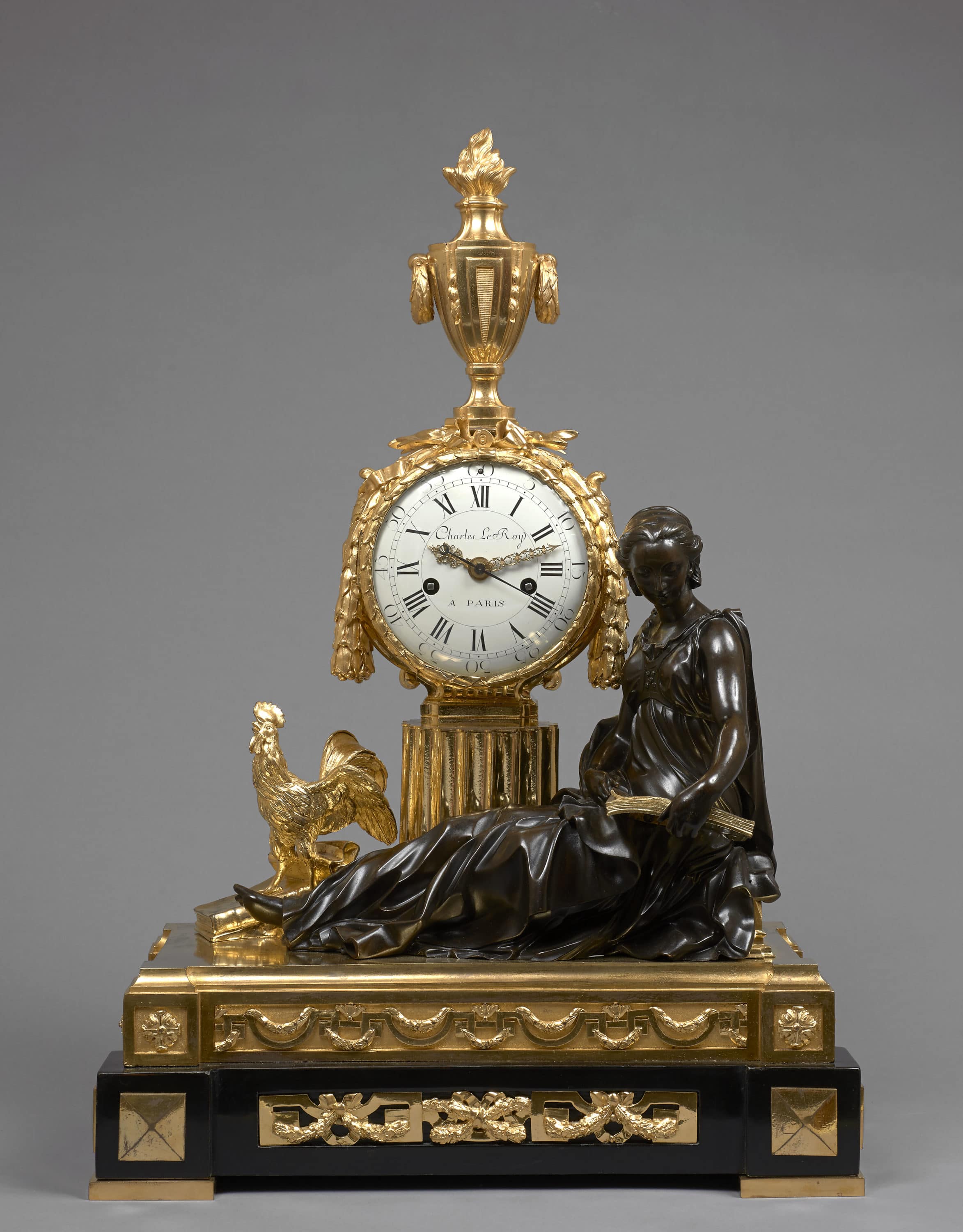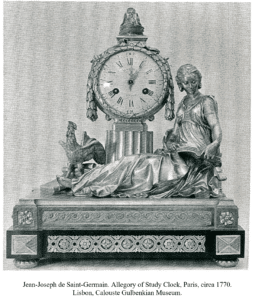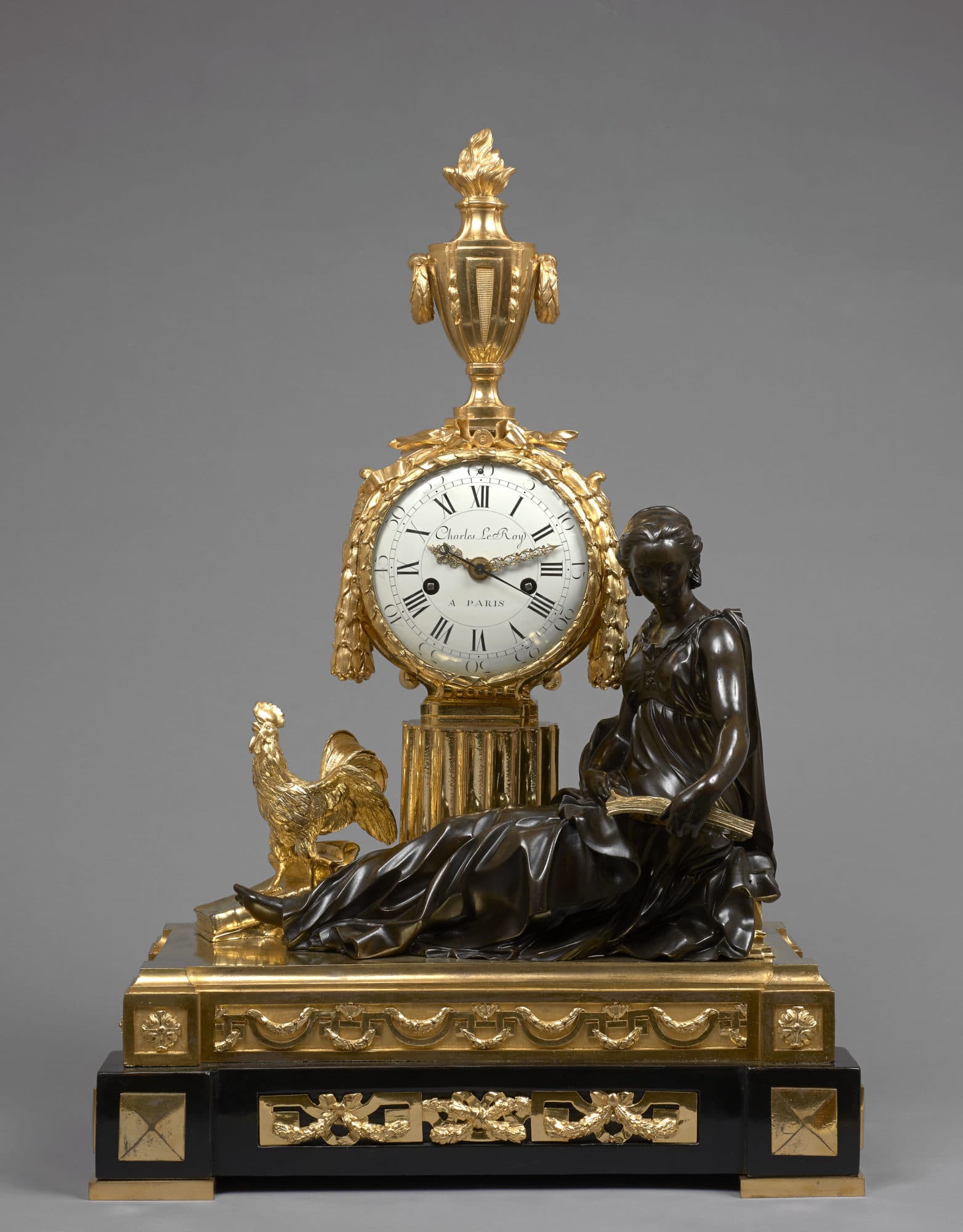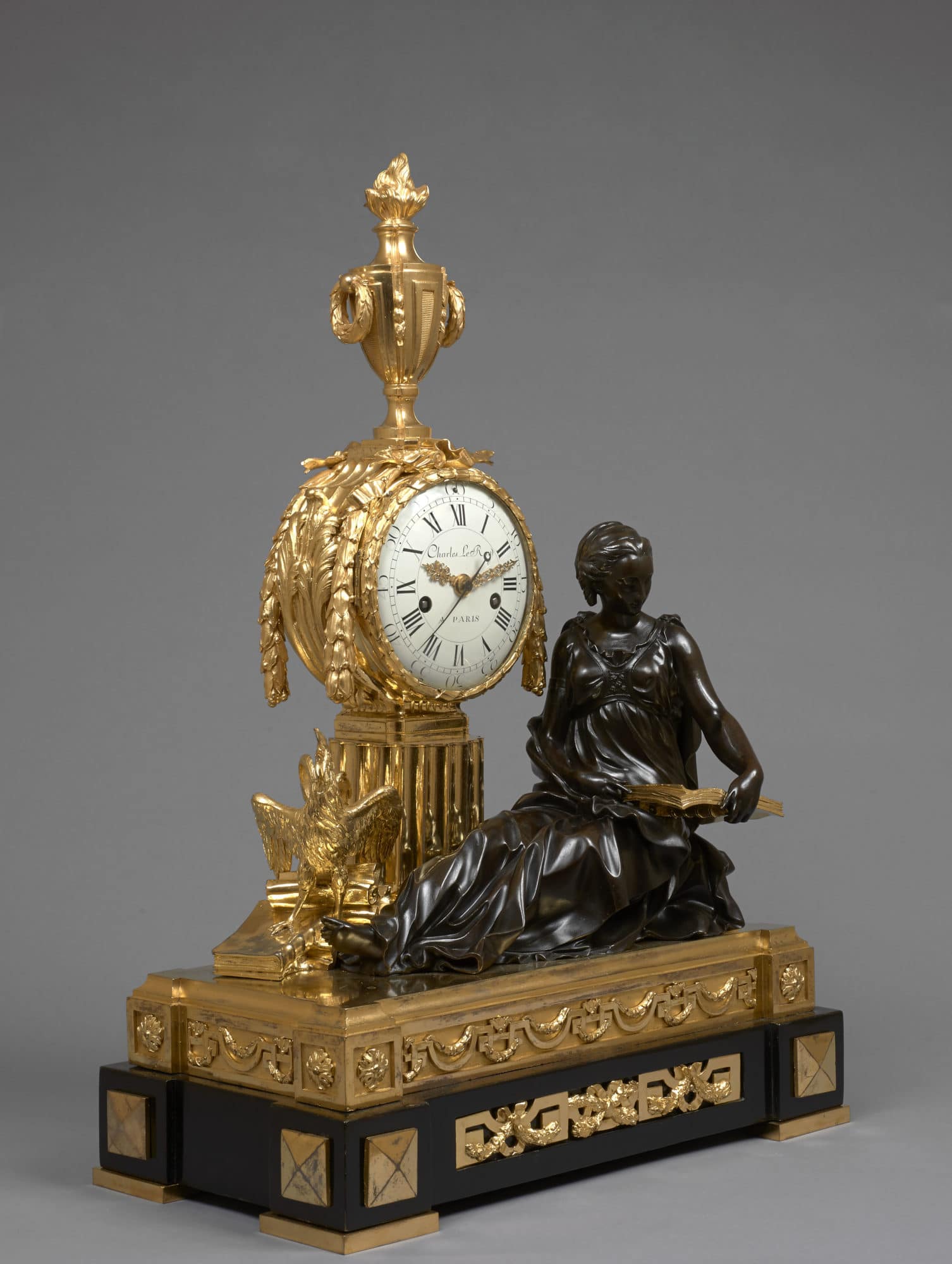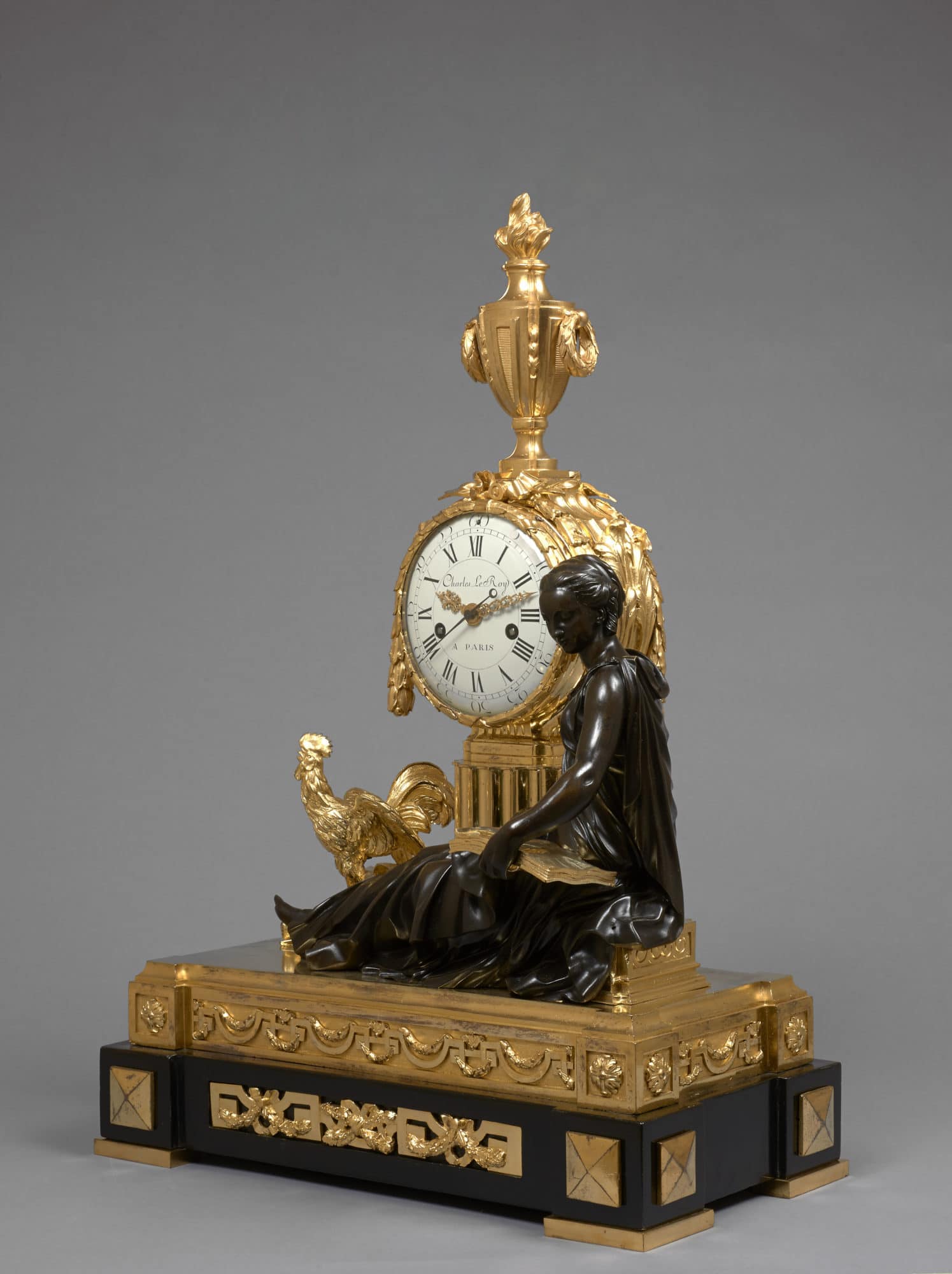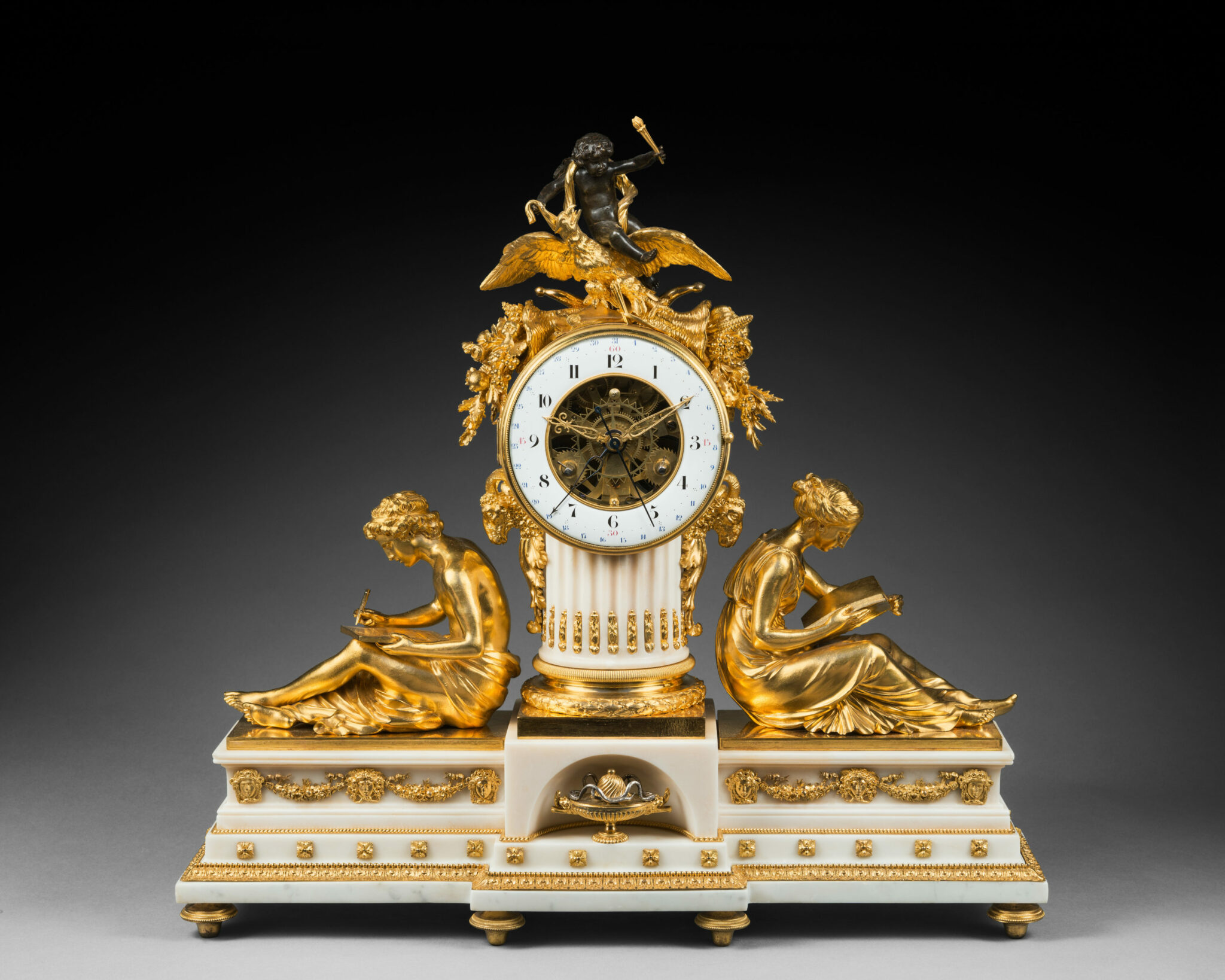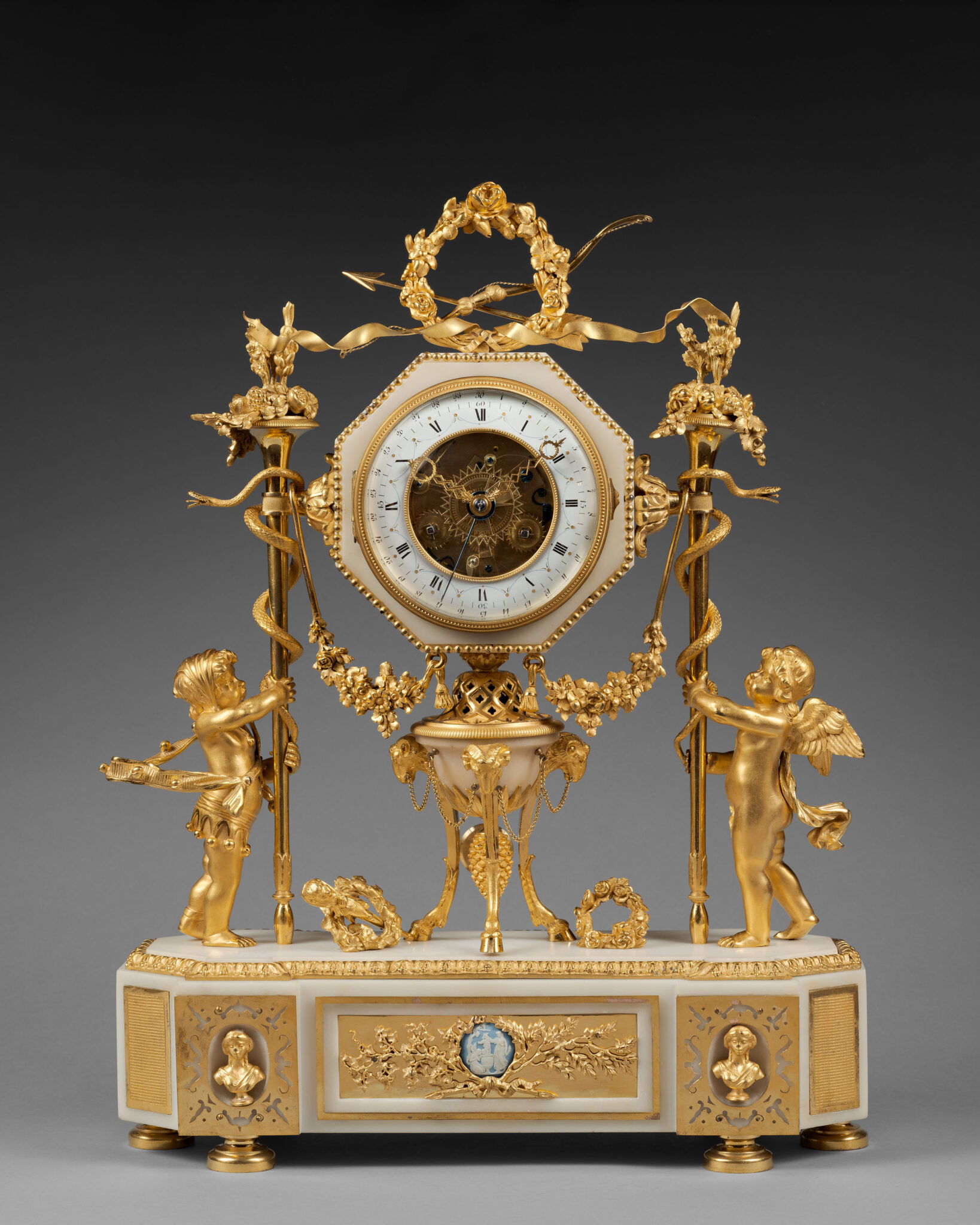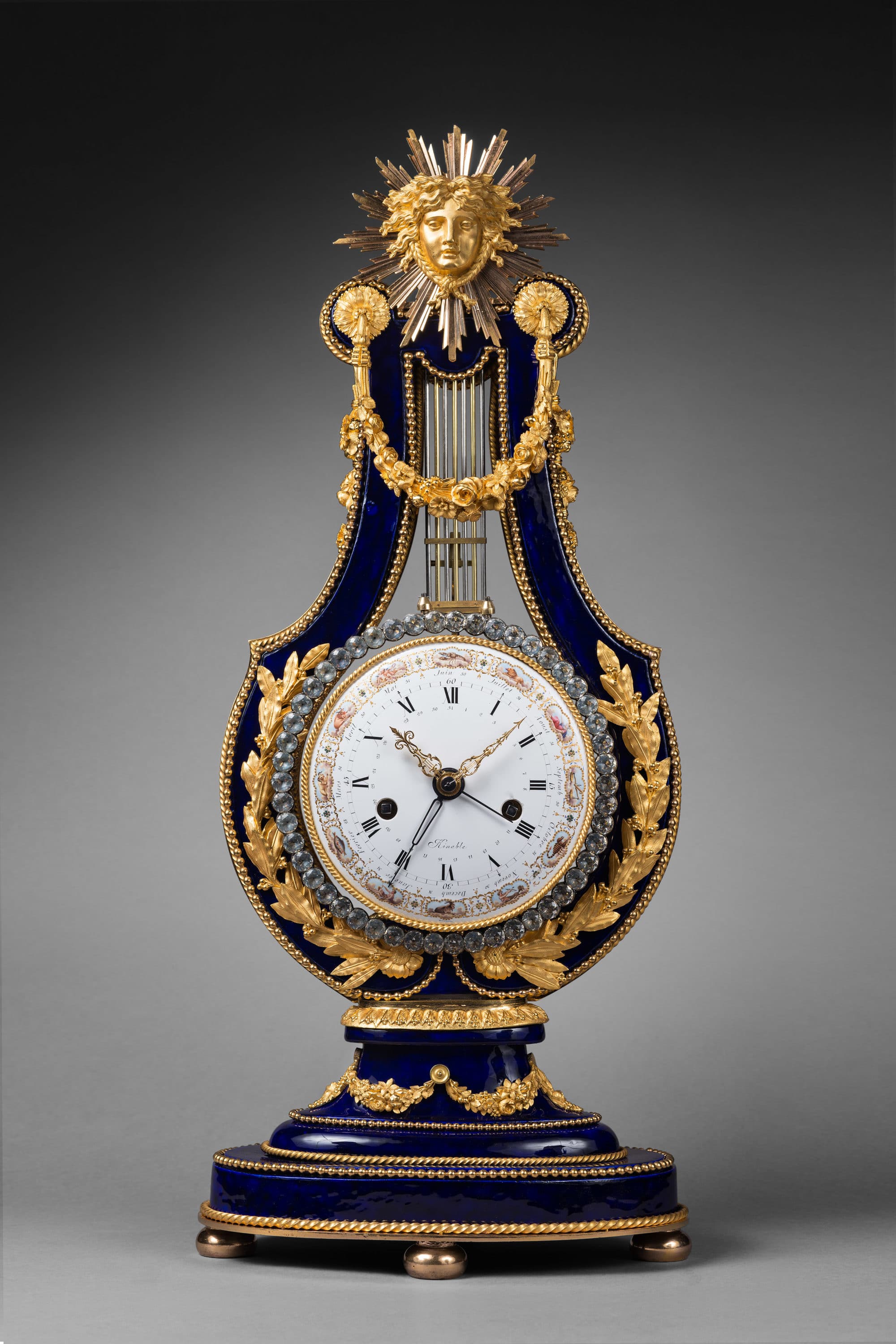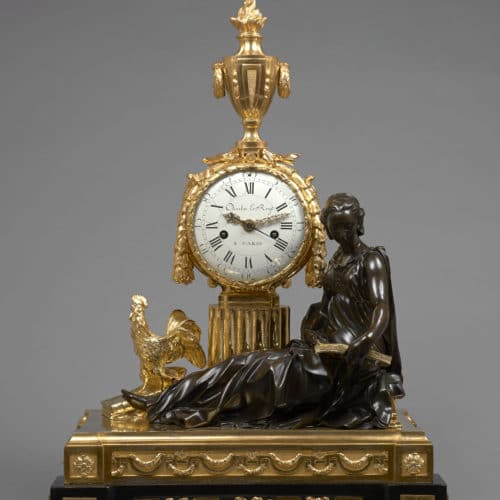Important Chased Gilt and Patinated Bronze Mantel Clock
“Allegory of Study“
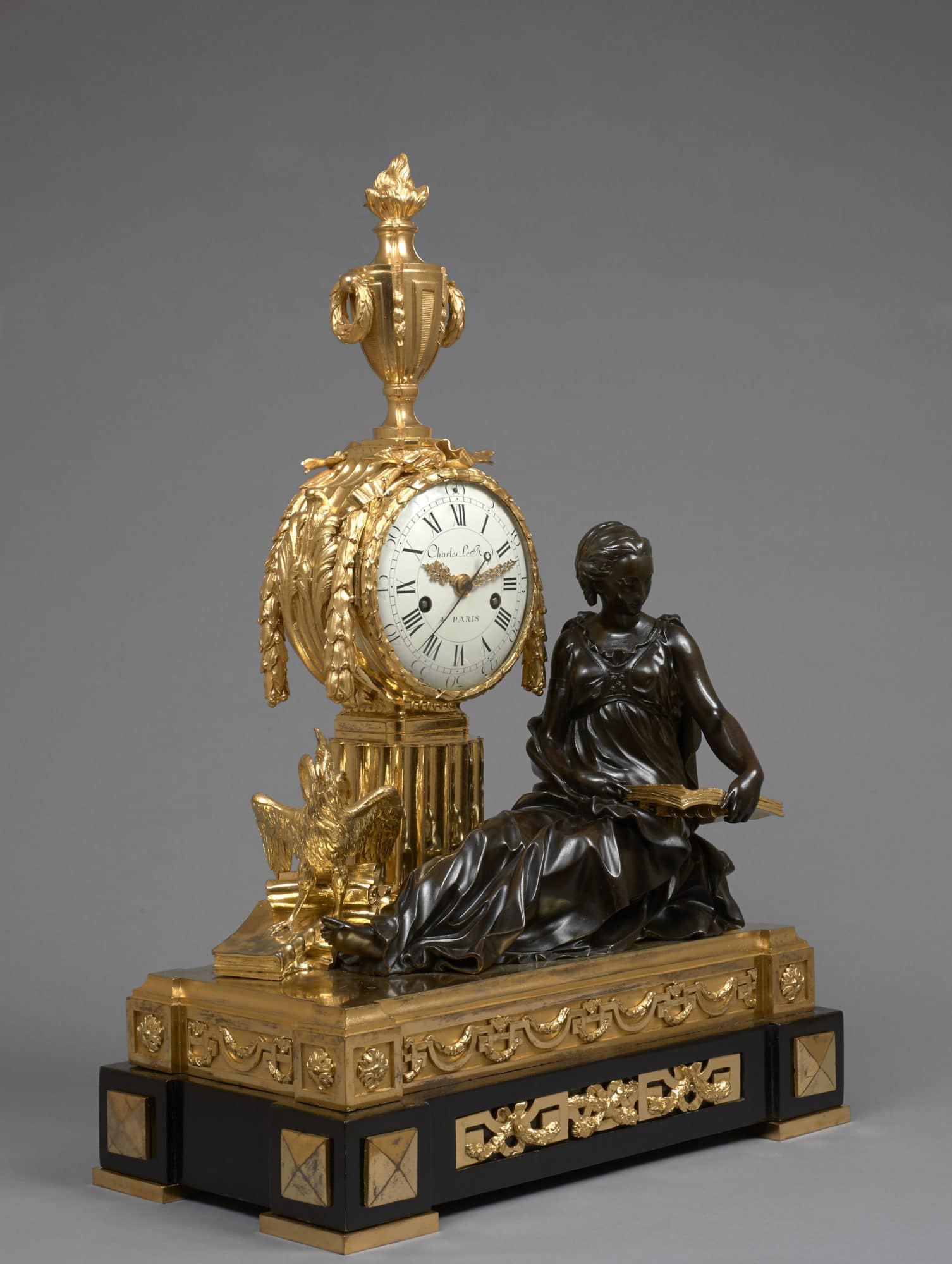
“Charles Leroy à Paris”
Case attributed to Jean-Joseph de Saint-Germain
Paris, early Louis XVI period, circa 1770-1775
Provenance:
– Probably the collection of Marc-Joseph d’Anglejan, the Count Anglejan (d. Paris in 1805) ; mentioned in his probate inventory of 1 Messidor year 13: “Another clock by the same maker (Charles Leroy) in a gilt copper cartel with bronze figure depicting a woman reading”.
The enamel dial is signed Charles Le Roy à Paris. It has Roman hour numerals, Arabic minutes and seconds. The case is surmounted by a flaming antique urn; the bezel is formed by a finely chased suspended laurel torus. The dial is supported by a fluted column that rests on a base upon which is seated a classically dressed patinated bronze woman holding an open book, who represents an Allegory of Study. At her feet lie books and parchments upon which a proud rooster, symbol of vigilance, is standing. The gilt bronze base is decorated with rosettes and a geometric frieze with intertwined garlands; it in turn rests on an ebony or ebonised wood base ornamented with a stylised frieze similar to those employed by cabinet maker Philippe-Claude Montigny.
Discover our entire collection of rare antique clocks and antique mantel clocks for sale online or at the gallery.
This clock is one of the greatest successes of the late Louis XV period and the early Louis XVI period. Its date suggests an attribution to Charles Leroy’s son Etienne-Augustin Leroy. Freely inspired by a model created around 1757 for the famous salonnière Madame Geoffrin, it was used by one of the most talented bronziers of the day, Jean-Joseph de Saint-Germain, who appears to have enlisted the sculptor Louis-Félix Delarue (1730-1777) for the design of the main group. In creating this clock, Saint-Germain demonstrated his adaptability and his willingness to embrace the aesthetic canons of the new neoclassical style. He made only a very few versions of the model, each with variations, skilfully combining ornamental motifs and thus rendering each “Allegory of Study” clock a unique work. Among the recorded examples, a nearly identical clock is in the Gulbenkian Museum in Lisbon (illustrated in H. Ottomeyer and P. Pröschel, Vergoldete Bronzen, Band I, Munich, 1986, p. 161, fig. 3.3.5); another is in the Louvre (illustrated in D. Alcouffe, A. Dion-Tenenbaum and G. Mabille, Les bronzes d’ameublement du Louvre, Dijon, 2004, p. 125).
Etienne-Augustin Le Roy (1737 - 1792)
Etienne-Augustin Le Roy, the son of clockmaker Charles Le Roy, became a master horologist en 1758. The Le Roy workshop, in the rue St Denis, worked for the Royal Courts of France, Sweden and Saxony. Etienne-Augustin Le Roy became Horloger du Roi (Clockmaker to the King). After his father’s retirement in 1770, he continued to use the signature “Charles Le Roy à Paris”. Several clocks bearing this signature, almost certainly made by Etienne-Augustin, were in the French Royal collections before the Revolution.
Jean-Joseph de Saint-Germain (1719 - 1791)
He was probably the most renowned Parisian of the mid 18th century. Active as of 1742, he did become a master craftsman until July 1748. He became famous for his many clock and cartel cases, such as his Diana the Huntress (an example is in the Louvre Museum), the clock supported by two Chinamen (a similar example is in the Musée des Arts décoratifs in Lyon), as well as several clocks based on animal themes, including elephant and rhinoceros clocks (an example in the Louvre Museum). In the early 1760’s he played an important role in the renewal of the French decorative arts and the development of the Neo-classical style, an important example of which may be seen in his Genius of Denmark clock, made for Frederic V and based on a model by Augustin Pajou (1765, in the Amalienborg Palace, Copenhagen). Saint-Germain also made several clocks inspired by the theme of Learning, or Study, based on a model by Louis-Félix de La Rue (examples in the Louvre Museum, the Gulbenkian Foundation, Lisbon, and the Metropolitan Museum in New York). Along with his clock cases, Saint-Germain also made bronze furniture mounts, such as fire dogs, wall lights, and candelabra. His entire body of work bears witness to his remarkable skills as a chaser and bronzeworker, as well as to his extraordinary creativity. He retired in 1776.
Discover our entire collection of rare clocks on La Pendulerie Paris.
